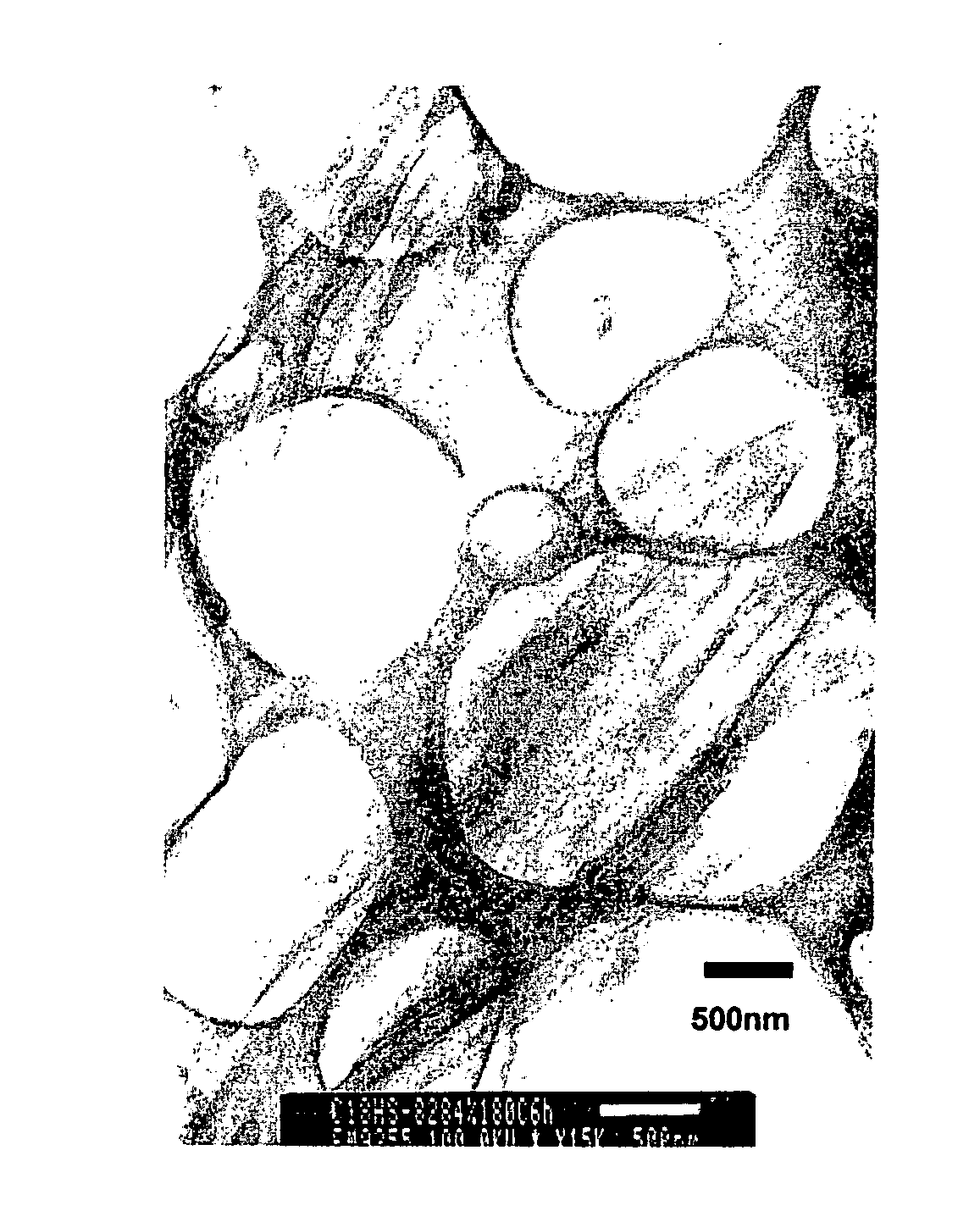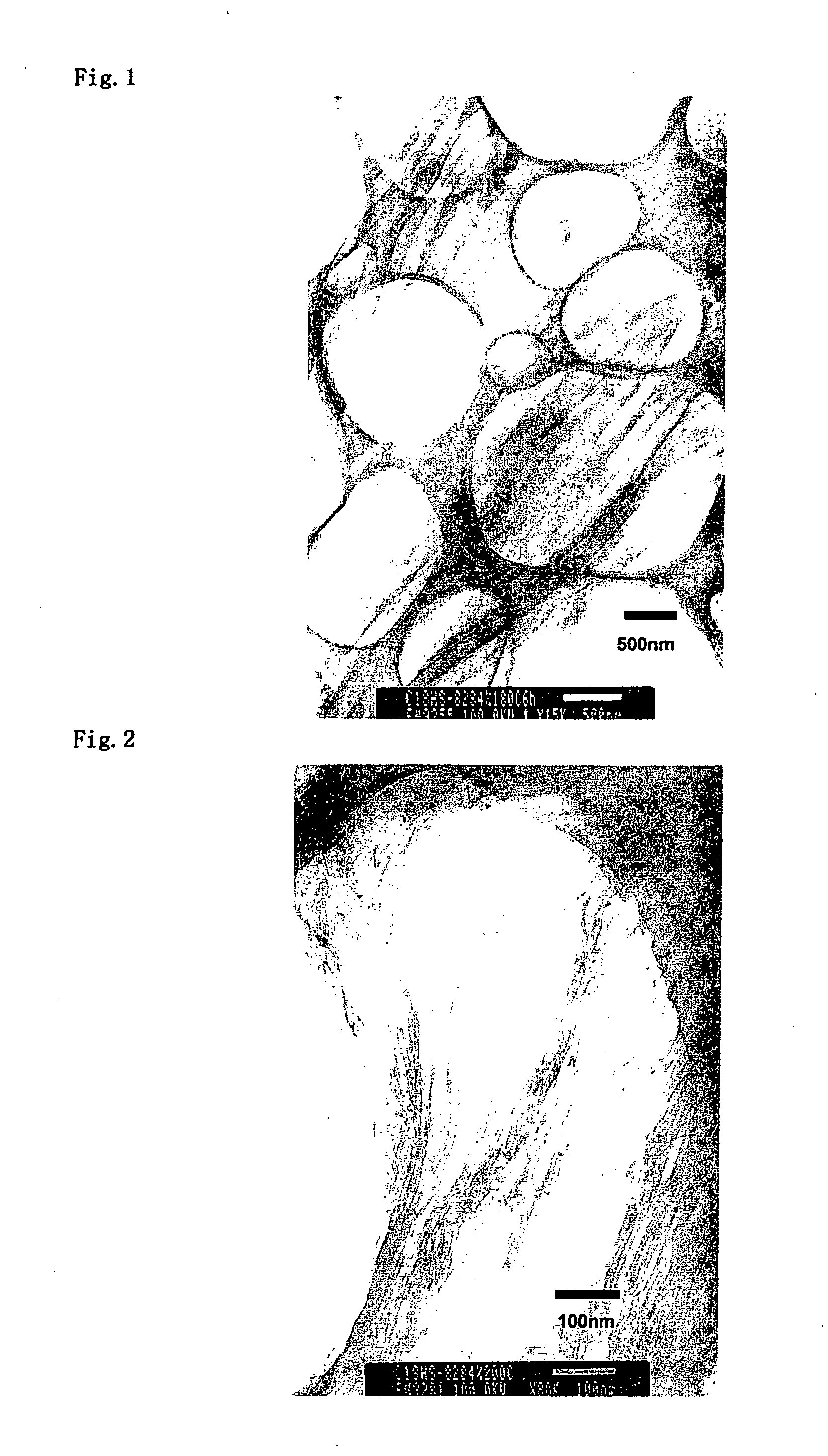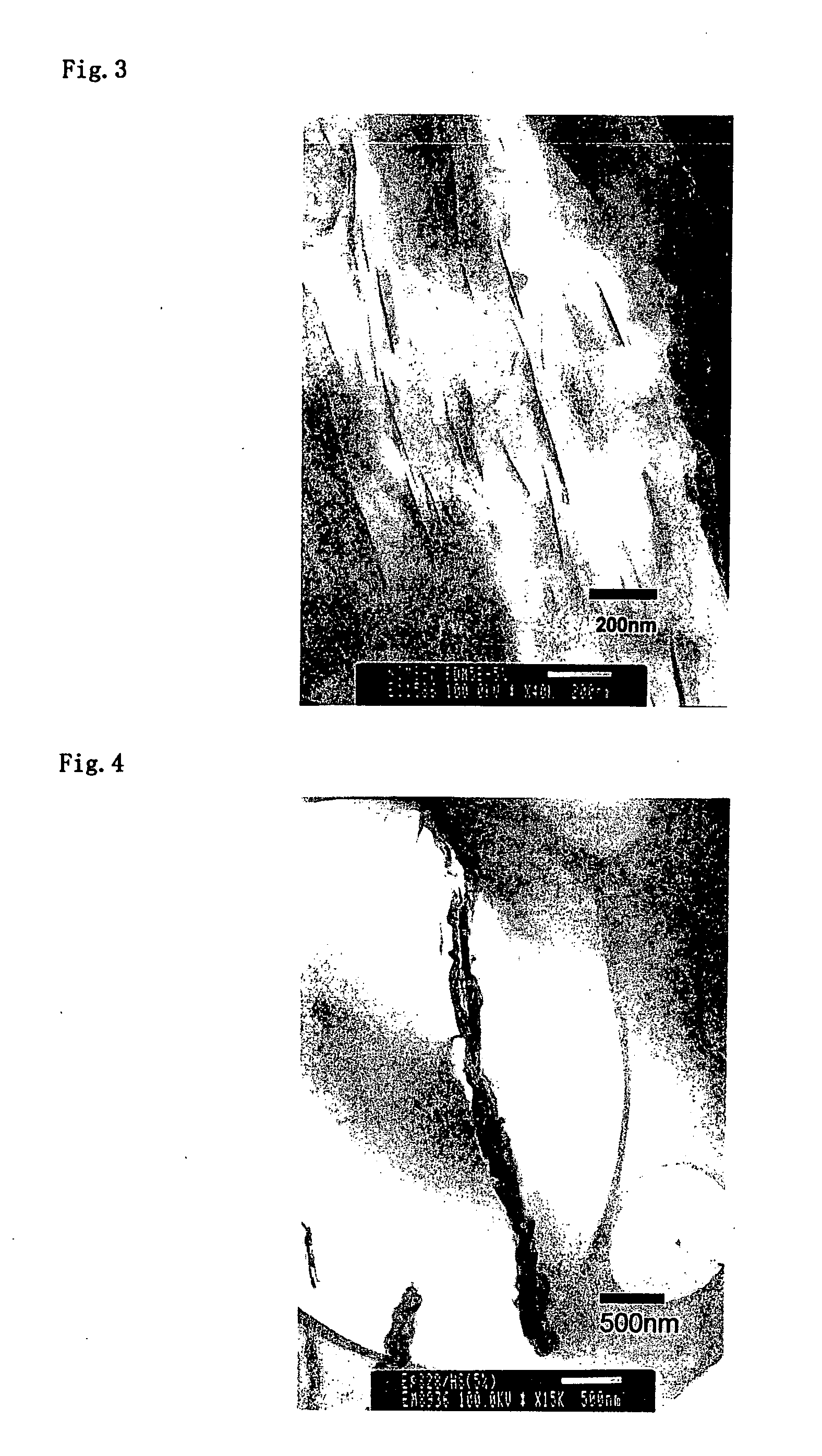Organic-Inorganic Composite and Polymeric Composite Material, and Method Producing Them
- Summary
- Abstract
- Description
- Claims
- Application Information
AI Technical Summary
Benefits of technology
Problems solved by technology
Method used
Image
Examples
example 1
(Preparation of Organic-Inorganic Composite 1)
[0079] As a positively charged organic compound, dodecylamine hydrochloride (made by Tokyo Kasei Co., Ltd.) is dissolved into pure water to prepare 0.1 M solution. To the 1 L of dodecylamine hydrochloride solution, 3 g of sericite (Z-20 classification) were placed, agitated, subjected to heat treatment at 70° C. for 4 days followed by repeated filtration / washing then dried to prepare organic-inorganic composite 1. As a result of XRD measurement of the obtained sample, distance between layers of sericite was extended to 2.3 nm.
example 2
(Preparation of Organic-Inorganic Composite 2)
[0080] Organic-inorganic composite 2 was prepared similarly to Example 1 except using octadecylamine hydrochloride (made by Tokyo Kasei Co., Ltd.) as a positively charged organic compound. As a result of XRD measurement of the obtained sample, distance between layers of sericite was extended to 3.4 nm.
example 3
(Preparation of Organic-Inorganic Composite 3)
[0081] As a positively charged organic compound; alkyl (C8-C10) bis(2-hydroxyethyl)methylammonium chloride (ESOCARD C / 12, Lion Akzo Co., Ltd.) was used. It was dissolved in a combined solvent (1 L) of water / isopropyl alcohol (50 / 50 vol) to prepare 0.1 M solution. To this, the organic-inorganic composite 1 obtained in the above EXAMPLE 1 (2 g) was placed, subjected to treatment at 70° C. for 4 days followed by repeated filtration / washing then dried to prepare organic-inorganic composite 3. As a result of XRD measurement of the obtained sample, distance between layers of sericite was 2.1 nm.
PUM
| Property | Measurement | Unit |
|---|---|---|
| Percent by mass | aaaaa | aaaaa |
| Force | aaaaa | aaaaa |
| Particle size | aaaaa | aaaaa |
Abstract
Description
Claims
Application Information
 Login to View More
Login to View More - R&D
- Intellectual Property
- Life Sciences
- Materials
- Tech Scout
- Unparalleled Data Quality
- Higher Quality Content
- 60% Fewer Hallucinations
Browse by: Latest US Patents, China's latest patents, Technical Efficacy Thesaurus, Application Domain, Technology Topic, Popular Technical Reports.
© 2025 PatSnap. All rights reserved.Legal|Privacy policy|Modern Slavery Act Transparency Statement|Sitemap|About US| Contact US: help@patsnap.com



